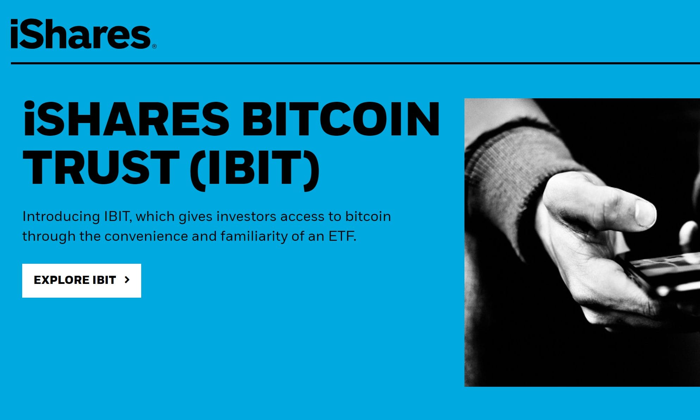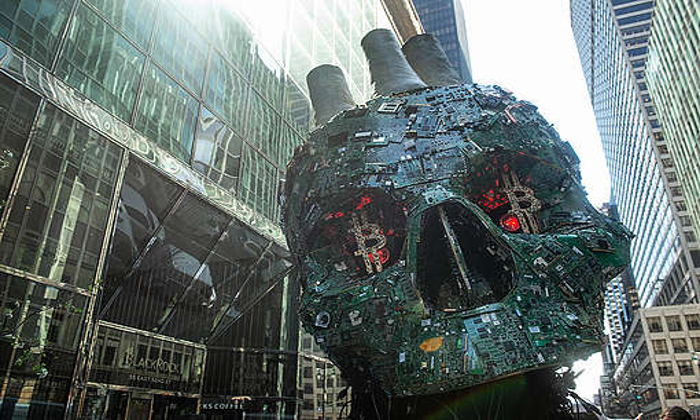DeFi trends are reshaping the landscape of decentralized finance, driving innovation and attracting both individual and institutional investors alike. As the market matures, we witness a surge of DeFi protocols that are revolutionizing traditional finance with innovative solutions and unparalleled accessibility. Leaders like Aave and Lido are at the forefront, demonstrating the significant potential of DeFi markets as they expand into new territories such as decentralized perpetual exchanges and real-world asset tokenization. This rapid evolution is not only indicative of increased adoption but also reflects the evolving needs of users who seek more than just basic financial services. By analyzing the current DeFi market trends, we can uncover the promising advancements that are set to redefine our financial systems in the coming years.
The rise of decentralized finance (DeFi) signifies a dramatic shift in how individuals and institutions engage with financial services. By leveraging blockchain technology, DeFi provides a myriad of opportunities, from lending to trading, without intermediaries. In this emerging sector, we see a diverse array of financial innovations aimed at enhancing accessibility and efficiency. With powerful DeFi leaders paving the way and introducing unique protocols, the continuous exploration of market trends will reveal novel pathways to capital formation and investment. As we delve deeper into these dynamics, it becomes crucial to understand the driving forces behind this transformation.
The Evolution of Decentralized Finance: Key Milestones
The journey of decentralized finance (DeFi) began with Ethereum’s groundbreaking smart contracts, which created a new framework for financial transactions and services. The early years, particularly from 2015 to 2018, saw the emergence of significant projects like MakerDAO, which successfully launched the first decentralized stablecoin, DAI. This marked a crucial milestone, allowing users to leverage their crypto assets while maintaining price stability. Additionally, trading platforms such as EtherDelta started to redefine how trades could be executed without intermediaries, setting the stage for the explosive growth of DEXs in the ensuing years.
As 2019 ushered in what is known as “DeFi Summer,” the landscape of decentralized finance transformed dramatically. With total value locked (TVL) skyrocketing and new liquidity mining incentives drawing attention, the sector experienced unprecedented growth. Notable innovations during this time included the simplification of asset creation through the ERC-20 token standard, which has since spurred a creative flurry of projects aiming to capture value within the DeFi ecosystem. These early developments solidified fundamental DeFi primitives, creating a solid base for the innovative protocols that would follow.
Current DeFi Market Trends
Today, the DeFi market boasts a diverse range of offerings, showcasing notable protocols that lead various segments. Lending platforms like Aave and Liquid Staking solutions provided by Lido have carved out substantial market shares, with Aave capturing nearly half of the lending market and Lido dominating liquid staking. This evolution indicates a maturation within the DeFi sector as firms continue to refine and enhance their competitive offerings to meet customer needs. In addition, new projects keep emerging, leading to an ever-evolving landscape that challenges existing protocols and stimulates further innovation.
Moreover, the rise of decentralized perpetual exchanges, also known as DEX perps, signals a growing trend in leveraged trading within the DeFi space. Protocols such as dydx and Hyperliquid have distinguished themselves by providing robust trading infrastructures capable of handling significant volumes. These platforms enable users to engage in derivatives trading with fewer barriers, thereby expanding access to advanced financial instruments. As more users flock to these platforms seeking flexible trading options, the landscape of DeFi continues to transform to accommodate this demand.
Innovations Paving the Way in DeFi
The latest DeFi innovations, especially in yield markets and real-world asset (RWA) tokenization, are crucial for addressing the needs of diverse investor profiles. Yield-bearing stablecoins from platforms like Ethena are reimagining how returns are generated within the DeFi ecosystem. By effectively integrating these assets into decentralized finance, Ethena provides stakeholders not only with a stable currency but also with the potential to earn passive income. This innovative approach to stablecoins enhances liquidity and attracts traditional investors into the digital asset space.
Additionally, the tokenization of real-world assets is one of the most significant developments in the DeFi landscape. Protocols like Ondo and Mountain provide viable pathways to bridge traditional finance and decentralized systems, allowing physical assets like real estate and commodities to enter the blockchain domain. This method not only enhances liquidity but also democratizes access to investment opportunities that were traditionally reserved for wealthy individuals or institutional players. As these innovations gain traction, they will likely play a pivotal role in redefining investment paradigms and unlocking new capital flows in the DeFi market.
The Role of DeFi Leaders in Shaping Trends
Market leaders such as Aave and Lido have significantly influenced the direction of the DeFi ecosystem. With a sizable total value locked (TVL), Aave’s advancement in lending mechanisms has democratized access to credit, positioning them as a crucible of innovation within the sector. Similarly, Lido has capitalized on the growing interest in liquid staking, creating a dynamic environment where users can derive value from their staked assets without sacrificing liquidity. These leaders not only set benchmarks for performance but also inspire new entrants to innovate within their segments.
Furthermore, these prominent protocols serve as catalysts for broader industry trends, such as risk management frameworks and institutional adoption of DeFi solutions. As more enterprises explore potential integrations with DeFi protocols, the influence of these leaders will likely increase, molding market expectations and governing norms. This trend highlights a promising trajectory for decentralized finance, with leading players driving innovations that adhere to user demands while enhancing security and functionality across diverse products.
Future Prospects for Decentralized Finance
Looking ahead, the future of decentralized finance appears bright, backed by continual innovations and evolving market dynamics. As developers push the boundaries of DeFi offerings, we can anticipate an influx of new protocols that enhance user experience, reduce friction in transactions, and amplify returns. The adaptation of Layer 2 scaling solutions is vital to alleviate congestion issues associated with Ethereum, ensuring that DeFi can handle a higher throughput of transactions, thus accommodating increased participation from both retail and institutional players.
Moreover, emerging trends like isolated lending markets aim to address concerns around collateral management and risk exposure. Platforms such as Morpho and Euler are paving the way for more tailored lending options that can adapt to specific borrower needs. As these trends materialize into fully realized products, they will solidify decentralized finance’s reputation not just as a niche market, but as a sustainable alternative to traditional finance. This evolution signifies that DeFi may play a central role in reshaping how we perceive and interact with financial systems in the years to come.
Impact of Regulatory Developments on DeFi
Regulatory scrutiny is becoming an undeniably significant theme within the decentralized finance space. As governments worldwide contemplate legislative frameworks to manage DeFi activities, the industry faces both challenges and opportunities. While constructive regulations can foster trust and further institutional interest, overly stringent rules could stifle innovation and participation in decentralized protocols. Thus, the dialogue between regulators and DeFi stakeholders is paramount in shaping a compliant yet innovative ecosystem.
Protocols that prioritize compliance while maintaining their decentralized ethos have begun to emerge as leaders in navigating this regulatory landscape. Their adaptive strategies not only attract institutional investors wary of regulatory backlash but also promote user confidence in the sustainability of DeFi. For example, some protocols are exploring features that enhance transparency, such as on-chain compliance tools, ensuring that they can adhere to regulatory standards. This collaborative spirit between innovation and regulation is crucial for fostering a healthy DeFi ecosystem that can withstand scrutiny while pushing boundaries.
The Growing Institutional Interest in DeFi
As decentralized finance matures, there is a significant upswing in institutional interest. Investment firms and hedge funds are gradually incorporating DeFi protocols into their portfolios, recognizing the transformative potential of this sector. This shift is reflected in the increasing total value locked within major protocols, signalling a broader acceptance of DeFi among institutional investors who are looking to leverage the benefits of decentralization and yield opportunities.
Furthermore, the advent of institutional-grade DeFi solutions allows these investors to participate securely in the crypto space while adhering to compliance standards. Products specifically designed for institutional clients aim to mitigate risks associated with participation in DeFi, such as smart contract vulnerabilities and volatility concerns. This growing convergence between traditional finance and DeFi lays the groundwork for a future where both sectors can thrive in tandem, fostering innovation and financial inclusion on a global scale.
Decentralized Finance Insights from Market Leaders
The insights provided by DeFi leaders like Aave and Lido can serve as vital indicators of both current trends and future directions within the decentralized finance realm. Their innovative approaches to liquidity provision, staking, and lending have set industry standards, making them invaluable sources of guidance for emerging protocols. By analyzing their successes and challenges, new entrants can develop strategies that leverage existing market knowledge while pushing innovative boundaries.
Through participation in dialogues and collaboration with these established players, burgeoning DeFi projects can better understand the landscape’s intricacies and user expectations. This shared knowledge base fosters a more cohesive environment where innovations can be nurtured, encouraging collective growth within the DeFi sector. As leaders continue to shape market dynamics, understanding their strategies becomes essential for anyone looking to make an impactful entrance into the decentralized finance niche.
Technological Advances Enhancing DeFi Protocols
The continuous evolution of technology is a driving force behind the advancements seen within the DeFi space. Innovations such as automated market makers (AMMs), flash loans, and cross-chain transfers have revolutionized the functionality of DeFi protocols. These technologies have allowed for increased liquidity, seamless trading experiences, and new financial products that were not previously feasible. The rapid adoption of these advanced tools exemplifies how technological progress can catalyze growth and drive the adoption of decentralized finance.
Moreover, the increased focus on security measures is a top consideration for DeFi developers. Advancements in code auditing, security-enhanced smart contracts, and insurance mechanisms are increasingly becoming standard protocols in the DeFi space, ensuring that users can trust their investments. As the focus on protecting users heightens, this dedication to technology and security will assert DeFi’s legitimacy in the larger financial ecosystem, helping bridge the gap between traditional finance and decentralized alternatives.
Frequently Asked Questions
What are the latest DeFi trends that investors should know?
Some of the latest DeFi trends include decentralized perpetual exchanges (DEX perps), isolated lending markets, and the tokenization of real-world assets (RWA). These innovations are shaping the DeFi market landscape, attracting institutional interest and pushing for broader financial inclusivity.
How have DeFi innovations influenced the cryptocurrency market?
DeFi innovations such as yield-bearing stablecoins, decentralized exchanges, and advanced lending protocols have greatly influenced the cryptocurrency market by enhancing liquidity, creating new investment opportunities, and attracting institutional investors, ultimately driving the growth of the DeFi sector.
Which DeFi leaders are setting trends in the industry?
Leading protocols like Aave, Lido, and Uniswap are at the forefront of DeFi trends, dominating their respective niches in lending, liquid staking, and decentralized trading. Their innovations continue to shape market expectations and set benchmarks for other DeFi participants.
What role do decentralized finance (DeFi) protocols play in financial markets?
DeFi protocols play a critical role in enhancing market liquidity, enabling peer-to-peer transactions, and offering accessible financial services without intermediaries. They are essential in creating a more inclusive financial ecosystem that empowers users with control over their assets.
What is the significance of Total Value Locked (TVL) in the DeFi market?
Total Value Locked (TVL) is a key metric in the DeFi market that measures the liquidity and adoption of various protocols. It reflects user confidence and the overall health of the DeFi ecosystem, making it a crucial indicator for investors and analysts.
Why is real-world asset tokenization a growing trend in DeFi?
Real-world asset tokenization is becoming a growing trend in DeFi because it bridges traditional finance and blockchain technology, making physical assets more accessible and liquid. This innovation enhances investment opportunities and paves the way for broader financial integration.
What challenges does the DeFi ecosystem face as it matures?
As the DeFi ecosystem matures, it faces challenges including high Ethereum gas fees, regulatory scrutiny, and security risks associated with vulnerabilities in smart contracts. Addressing these issues is critical for sustaining DeFi’s growth and ensuring user trust.
How do decentralized perpetual exchanges (DEX perps) work in DeFi?
Decentralized perpetual exchanges (DEX perps) enable users to trade futures contracts without intermediaries, allowing for leveraged trading and risk management in a decentralized manner. They are gaining traction for providing efficient and innovative trading solutions in the DeFi market.
What are yield-bearing stablecoins and how do they affect DeFi finance?
Yield-bearing stablecoins are digital assets that maintain their peg to fiat currency while also earning yields through various DeFi activities. They enhance the attractiveness of stablecoins in the DeFi market by providing not only stability but also the potential for growth.
| Aspect | Details |
|---|---|
| Historical Development | Foundation laid by Ethereum’s smart contracts; introduction of DAI and decentralized trading platforms. |
| DeFi Summer | Mainstream growth due to liquidity mining and innovative governance. Adoption of alternative blockchains. |
| Leaders in DeFi | Aave (Lending), Lido (Liquid Staking), Uniswap (DEXs), commanding significant market shares. |
| Trends to Watch | DEX Perps, Yield-Bearing Stablecoins, Isolated Lending, Yield Markets, RWA Tokenization. |
Summary
DeFi trends are reshaping the digital financial landscape by driving innovations that cater to evolving user needs. The industry’s rapid maturation is attracting institutional players, while leading protocols like Aave and Lido are paving the way for new concepts such as decentralized perpetual exchanges and real-world asset tokenization. With increasing regulatory scrutiny and the rise of yield markets, the future of DeFi holds potential for broader adoption and integration with traditional finance systems.
DeFi trends are reshaping the landscape of finance, merging traditional principles with the innovative possibilities offered by blockchain technology. As decentralized finance continues to capture the spotlight, the surge in DeFi protocols has resulted in a variety of new market trends, emphasizing efficiency and user empowerment. Key players, including Aave and Lido, are at the forefront of this movement, driving substantial investment and interest from institutions worldwide. Innovations such as decentralized perpetual exchanges and real-world asset tokenization illustrate how DeFi is evolving to meet diverse financial needs. In this article, we will explore these dynamic trends and their impact on the DeFi market, highlighting the leaders and forward-thinking strategies that are defining the future of finance.
The rise of decentralized financial systems, often referred to as open finance or crypto finance, illustrates a transformative shift in how individuals and businesses interact with financial products. These emerging financial ecosystems prioritize user autonomy and transparency, enabling participants to engage in lending, trading, and investing without traditional intermediaries. The concept of decentralized applications (dApps) has given birth to various DeFi innovations, creating new opportunities for active participation in the financial arena. As we delve into the latest developments in this rapidly evolving sector, we will uncover the trends guiding the market and spotlight the influential protocols that are making waves in the decentralized finance sphere.















